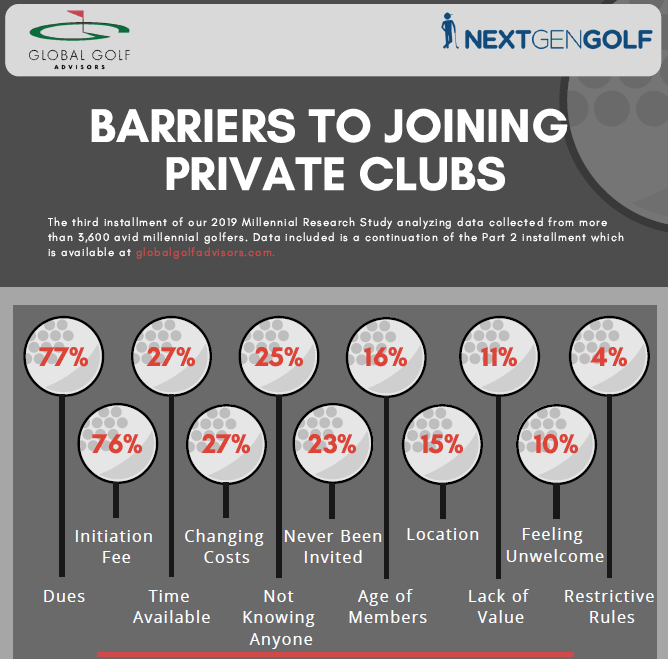Sourcing high quality staff who are in it for the long run is a challenge for all clubs, not least those situated in rural areas. GGA’s George Pinches demonstrates how putting in the hard yards at the point of search can produce the people you are looking for.
1. Talk to us about the current hiring landscape for clubs. Is high staff turnover still an issue?
Staff turnover remains an ever-present burden clubs have to face. One which is costly in both monetary and non-monetary terms.
The difficulty for clubs is the complex nature of the reasons behind the hiring challenges, ranging from:
Economic forces – When recruiting and retaining both management and staff, clubs often come up against macro-economic issues that are beyond the scope of the club to address
Cost of living – In many markets, the high cost of living limits the available staff within the club’s catchment area
Geography – Location and commute-time constraints can often lead to prospective employees seeking out a more practical job opportunity
So, the landscape can be challenging both for the club and for prospective or current employees, with only some of these variables within the club’s control.
2. What issues does this create in relation to morale and sense of identity within a club?
Private clubs are the ultimate in repeat business, so members want to know staff on such a level that staff know their preferences without even needing to ask.
Consistency and recognition are very important aspects of the club experience, and this is greatly hampered by a constant change in club personnel at every level. Managers often find themselves in a position of needing to start from scratch each season – losing the staff morale and good will built up over time.
Retaining club professionals and instructional staff is critical due to the personal nature of their interaction with members and their children. They are a great ‘unifier’ in the club environment across members, staff and the board, and the continuity in these roles is of paramount importance to the mood of the club at any one time.
3. How can clubs experiencing prolonged high staff turnover get themselves out of this cycle? What do they need to do differently?
They can pay attention to the local market and strive to be an employer of choice. While compensation is important, many other factors impact recruitment and retention.
In terms of taking practical steps, start by investing in the current management and staff. Professional development is a key component, regardless of whether an employee eventually leaves. Many private clubs become a sought-after employer because of the people they have produced within that sector.
Second, just as the club uses a member survey to gauge member satisfaction and obtain specific information that is useful in planning, engaging staff through a survey can be just as enlightening. Management, and to a much lesser extent the board, need to hear from the silent majority to understand which initiatives lead to less turnover.
The use of data-driven decision making is just as critical in Human Resource Management as it is in other aspects of club leadership.
4. How much can a robust structure and process help in all of this?
Recruitment and selection must be a structured process. Clubs must take the time to establish well-defined search criteria which clearly reflects the knowledge and experience you seek.
When recruiting for core positions, avoid short-term thinking and think carefully about emerging trends and the skillset you need to face the challenges of the future.
Retention, at the most senior level, involves setting clear expectations in writing with a well-defined monitoring and performance appraisal policy in place. Typically, Boards want accountability, measurable results and consistent results within the club’s unique history, vision, and culture. GM/COO’s want clear expectations in writing, and for their results to be regularly monitored and evaluated.
5. Are there certain measures a club can take to help identify the types of individuals they are looking for? More importantly, the ones who will help achieve a greater level of continuity within the club?
Clubs benefit from attracting and retaining individuals who have decided to make the club industry their career path, individuals who envisage a time when they are leading their own club and are keen to learn and develop. There is always a risk that you will lose that “rising star”, but they will often return when the opportunity presents itself.
How do you find these individuals? Predictive Personality Testing is one tool which helps augment the search process to isolate those with the best behavioral and cognitive fit for your club, later confirmed through a more traditional interview process.
Referrals are another tool for attracting, sourcing and retaining managers and staff. GM/COO’s who are active and networking in the club industry develop a deeper and wider connection with their peers, which can pave the way for referrals and approaches from prospective employees.
Any tactics you deploy in your search will be underpinned by one fundamental component: reputation. The reputation of your club, both from a staff or member perspective will either attract or put off prospective employees. So, think about the influence of online reviews, social media, and other outlets where people are expressing an opinion about your club. Address just criticism through investigation and resolution – this will clearly demonstrate your duty to the club’s stakeholders, build a positive reputation, and appeal to prospective employees who are in it for the long haul.
This article was authored by GGA Director and Club Governance expert George Pinches.












